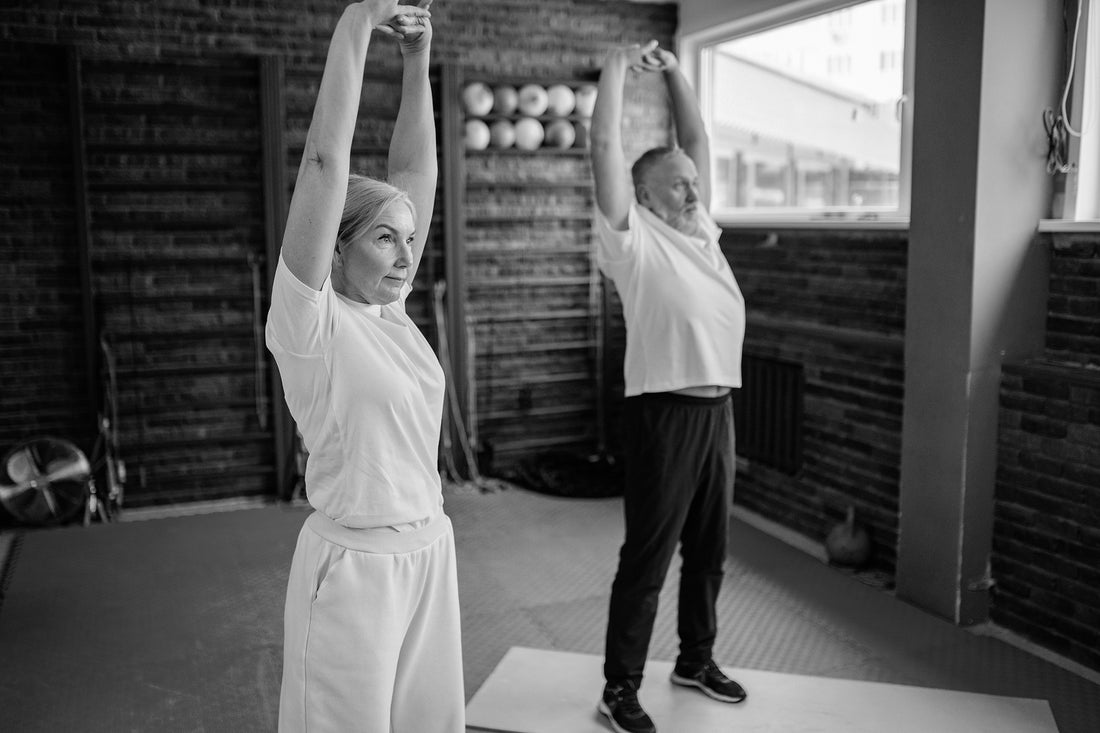Are Your Joints Aching? 3 Ways To Help Achy Joints

Most of us don’t think at all about our joints until they cause us pain.
For most of us once our joints have started causing pain, we are not entirely sure what do about it.
Knowing a bit about your joints and how to look after them (whether they hurt now or not) will help you stay active.
The good news is that Physiotherapy can help you!
WHAT YOU NEED TO KNOW ABOUT JOINTS
The Joints in the body we refer to are where one bone meets another and some form of movement occurs. Think your knees, ankles, hips, shoulders – get the picture?

These are known as synovial joints. The ends of the bones are lined with a substance known as articular cartilage – think teflon lining.
The articular cartilage is quite thick, and separates the ends of the bones from one another – so they appear to hover apart on an x-ray. If you see the joint surface of a leg of lamb – the shiny white surface is the articular cartilage.
Between the bones and the articular cartilage lies synovial fluid – think of this as a lubricant that allows smooth movement of the bones on each other.
The joint is then encased in a joint capsule – think a seal that keeps the synovial fluid in place.
Our joints allow us to undertake our daily activities and routines, so when they’re not functioning as best as they can, it can be quite distressing.
WHY DO MY JOINTS ACHE?

Often worn articular cartilage is involved in a lot of cases of aching joints. This can become all more prominent as we age. Worn cartilage can setup a process of inflammation within in the joint that leads to an irritated joint capsule and swelling within the joint. This is essentially the process underpinning Osteoarthritis.
It is easy to let this pain dictate our thoughts and perceptions about our joints. One of the most common things that we hear is that people with achy joints worry that more exercise will continue to wear their cartilage away.
This is not always the case! Pain in the joints is not always a sign that exercise will damage them further. In fact, quite often the opposite is true – you just need to know what form of exercise will help you.
3 WAYS TO HELP ACHY JOINTS
The following are some useful tips about keeping your joints healthy:
1. Joints Do NOT Have Expiry Dates
Often we assume that too much activity and exercise is to blame for our achey joints. That every movement our limbs make literally wear the cartilage away.
Although worn cartilage is often involved in sore joints, this does not mean that they have a limited number of “uses” before their lifetime expires.
2. Exercise Avoidance Is NOT The Answer!
Exercise CAN HELP keep joints healthy by strengthening up surrounding muscles.
Stronger muscles in turn help to unload sore joints. This means that instead of the joint itself taking the load and stresses of daily exercise or activities, the associated muscles will, which in turn can decrease joint-related pain.
Exercise can also maintain the flexibility of joints to help keep them healthy and mobile.
Regular exercise can also help in maintaining a healthy weight, reducing the stress on joints, and has other psychological and emotional benefits.
3. Know The Warning Signals Of “Unhealthy Exercise”
Your joints will be the first to let you know if the exercise you are doing is causing you harm.
It is possible that the wrong kind of exercise for conditions involving joint damage such as osteoarthritis can make your symptoms worse.
Some discomfort in a damaged joint is normal, however substantially increased pain and swelling during or after exercise may be a sign that what you are doing is not as productive as you may think.
This is where Physiotherapy assessment and appropriate exercise prescription can help to ensure that you are doing only beneficial exercises and activities for your joints.
MY JOINTS ACHE. WHAT SHOULD I DO NOW?
If you are concerned about your aching joints, you can BOOK ONLINE to see any Leading Edge Physiotherapist and they can prescribe a tailored exercise program to assist in strengthening the important muscles that help protect your joints as well as any sore spots.
If you are concerned that any of the above circumstances may apply to you, or if your achey joints have led you wanting to move and feel better, then book in to see any one of our physio’s at Leading Edge for an assessment!
